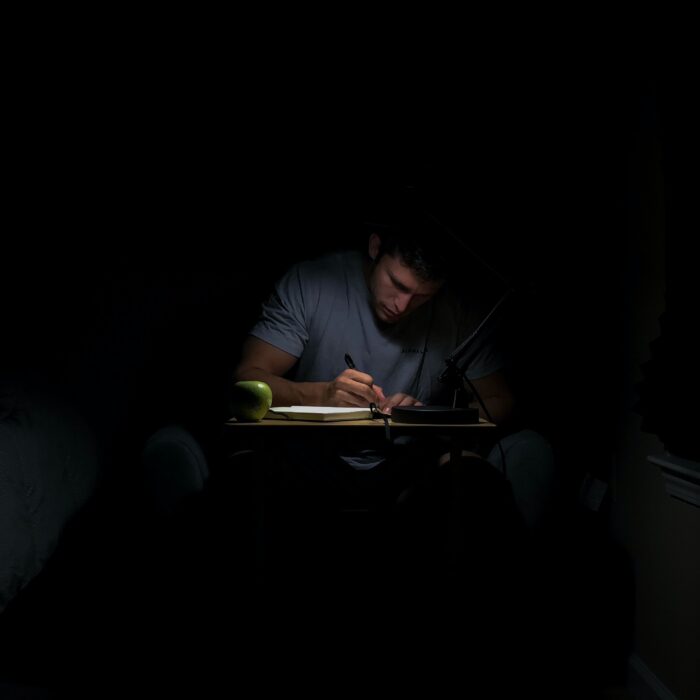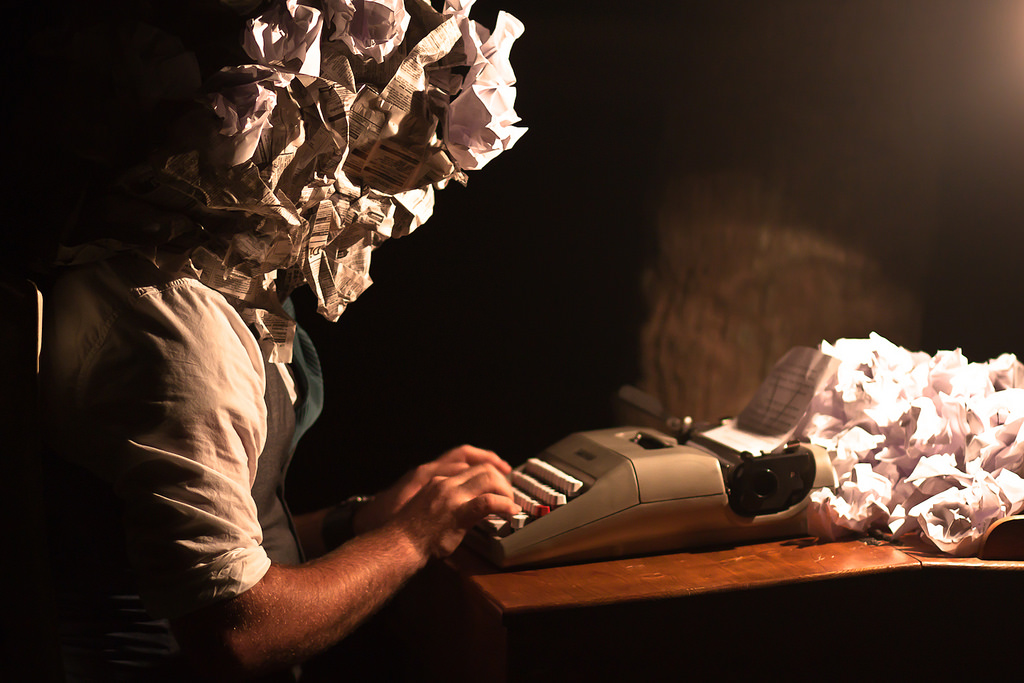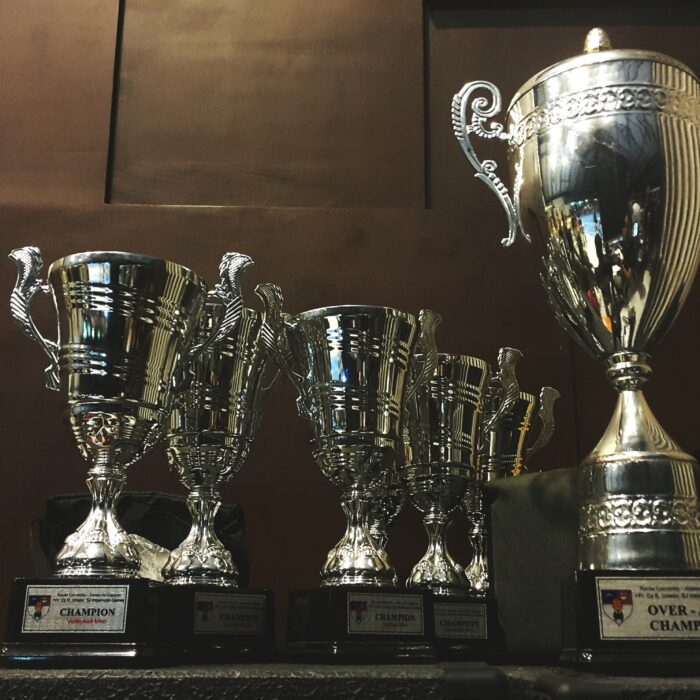You have no items in your cart. Want to get some nice things?
Go shopping
The scene: Lunch, 6th period. Betsy’s singing. Jennifer’s admiring her blue shirt. Rachel R. is in her basic headache state. Joanna’s moving her head. Lanequa and Kiona are chasing each other. And Rachel M. is thinking of “Yellow.”
A typical day at the lunch table.
***
Fact: I’ve been writing about my friends and their crazy lives since I was 12. Throughout junior high school, I wrote a series called “Lunch Table Memories” featuring the adventures (and misadventures) of myself and nine of my friends, who – you guessed it – sat around my lunch table. Creative.
From writing about crushes, future children and husbands, careers and everything in between, words flowed from my 12-year-old fingers onto the beige keyboard of my desktop Packard Bell. My stories include detailed scenes, explicit dialogue and…pretty darn good grammar. As I flipped through my work recently, I was actually surprised by my proper use of semi-colons.
I also became curious about the reactions my friends had when they initially read my work.
I honestly don’t remember what prompted me to write about them. I definitely can’t recall why I kept at it for so long, included so many details. I do know one thing: I never asked their opinions on the pieces before pressing ‘print.’
Not. Even. Once.
I just wrote what came to mind – good, bad, embarrassing. Sometimes the stories were fictional, but most of the time they weren’t. Weekly, I would hand out the printed stories and we would read them aloud at lunch:
Once upon a time, in a ghetto long ago…
Recently, a lot of stuff has happened…
Imagine that us at the lunch table were complete opposites…
And so forth.
The subjects and characters of each piece made their debut without anyone (except myself) knowing any details beforehand.
In other words: If I wrote about someone, not only wouldn’t she know until someone read the piece aloud, she also didn’t have the slightest clue as to what I was writing about.
(Yep. I was a great friend back then.)
Nowadays, I keep the stories inside plastic sheet protectors, in a white three-ring binder. Among the pages are pictures of my friends, drawn by one of the lunch table’s own. The narratives are littered with pre-pubescent late ‘90s slang, seen in now-defunct AOL chat rooms. The birth of “LOL” and “BRB” are well documented in my work, as are various online boyfriends and the failures of several virtual relationships (with…virtual strangers.) My stories have titles like “I Know What You Did Last Time You Went Skating: Parts 1 and 2” and “A Stroll Down Memory Lane.” There is a mini-series within the main series: “A Look into the Future” and “All Grown Up.” We even came up with color codes for each of our love interests so that when we gossiped about them, no one but us knew who we were talking about.
Example:
“Of course, everyone knows that Betsy is crazy about Purple. Just the other day, she wrote a letter confessing her true-Blue (sorry, Jennifer) feelings to him.”
(“Purple” and “Blue” are pseudonyms for guys who shall (still) remain nameless.)
There are harrowing tales of pursuing crushes – or as I wrote, “stalking prey like a praying mantis.” Fantasies about handsome celebrities, Ouija board predictions, bad fashion. In a nutshell, the stories are a detailed, cringe-worthy look into the psyche of an adolescent female, circa 1997.
Being a writer, the lives of friends and family may end up in our work. Often. It usually goes without saying: your troubles will probably become our topics. Not in a bad way, of course (hopefully.) It’s generally a good thing. Be honored that we as writers think so much of you that you’re cast as a protagonist in our latest work. It’s our non-verbal, semi anti-social way of saying “You’re Interesting.”
***
The day before we arrived at the beach, Tiffany’s obituary ran in the Raleigh News & Observer. It was submitted by Gretchen, who stated that our sister had passed away peacefully at her home. This made it sound as if she were very old, and had a house. But what else could you do? People were leaving responses on the paper’s Web site, and one fellow wrote that Tiffany used to come into the video store where he worked in Somerville. When his glasses broke, she offered him a pair she had found while foraging for art supplies in somebody’s trash can. He said that she also gave him a Playboy magazine from the nineteen-sixties that included a photo spread titled “The Ass Menagerie.”
-David Sedaris, “Now We Are Five”
(Published in the New Yorker, Oct. 28, 2013.)
David Sedaris, a regular contributor to the New Yorker and author of “Me Talk Pretty One Day” (and a slew of other books) writes about his family regularly. In a 2007 interview with the Missouri Review, he briefly discusses getting a green light from relatives before publishing a story:
It’s important to me that the people I love aren’t hurt. If I write about anyone in my family, I give it to them first and say, “Do you have any problem with the way you’re portrayed? Is there anything written here that you don’t want people to know?”
Of course, I didn’t do this. Especially not when I was 12. I always assumed my friends were okay with the details of their lives appearing in my stories. After all, we kept in contact well after the narratives were written, so I presumed no one wanted to crucify my soul.
Still, I never asked my friends their thoughts on what it’s like to see their antics in print.
Until now.
“It was all in innocent fun,” said Betsy, one of my friends I’ve written about. “I can’t really remember my initial reaction back then. I do remember looking forward to your stories and especially found interest then in your outlook on our future lives.”
In my writing, Betsy became a psychiatrist who once had to deal with a female patient that talked to her foot. In real life? She became a nurse.
“I always looked forward to reading them, and I could not wait until you wrote another one,” said Kiona. “I still talk about your stories to this day. Just a few days ago I was telling my co-worker about your writing about me and my kids in the future. Funny stuff.”
Kiona: I’m divorced. The damn bastard ran off with my car! But ya know what? I tracked him down… and I beat him with my frying pan!
Funny stuff indeed.
“We couldn’t be mad because it was all true,” said Jennifer, who according to my writing, was once easily persuaded by candy. “Plus, it was all in harmless, good fun.”
In some of my stories, my friends and I “grew up” and became criminal lawyers, psychics, cartoonists, record label execs, stand-up comediennes, psychiatrists. We wore Versace suits, drove exotic cars. We had kids, got married, divorced. In one particular story, my friend Rachel became CEO of a record label. The name? Ska Punk Princesses.
“Too bad that’s not true,” she said. “Maybe I would have some money then.”
Seriously.
Not all of the pieces were fictional, though. Most of them centered on events – past and present – that gave light to how friendships began, who we were as young ladies.
At least that’s what I think I was trying to write about.
When I first saw Lola, my first impression was that she was sorta weird. I mean, when do you meet one of the best kick ball players in fifth grade? And what really shocked me was that she was a girl. Not to be sexist or anything, usually the boys are better at kick ball (and nothing more.) So I was pretty impressed… But I think it was all in the cards. I think that we knew each other from a past life and were destined to become friends.
“Your stories were always something I looked forward to,” said Lola, the former fifth grade kickball champion. “I was always excited and happy to read about what antics we were about to find ourselves in. I can’t say I was ever pissed or upset about anything you wrote.”
The general consensus among my friends, almost 20 years after the stories were written, is that they were completely okay with my depiction of their lives.
The other accord is, most of my friends don’t even remember what I was writing about.
“I wish I remembered the stories,” said Lanequa, “but I can’t remember the details.” In my “All Grown Up” mini-series, Lanequa went on to become a psychic – complete with her own hotline. In reality, she became a teacher.
“I don’t remember your stories in middle school,” said Laurie, who was featured in a few of my pieces. “I don’t remember reading them.”
I reminded her:
Laurie: My rice Krispies were talking to me!!!!
Me: MINE TOO!!
::They proceed to do the Power Ranger handshake::
“That may or may not have been fiction,” she said.
As it goes.
***
Even though these things may not seem important right now, by the time we’re all 40 and old and all that crap, we’ll probably forget all of this.
“We all loved your stories and would fight over who got to read them first,” said Jennifer. “Even though some of us may have drifted apart over the years, your stories definitely bring us back to a time when the lunch table was the highlight of all our days.”
I eventually stopped my non-consensual writing about my friends from the lunch table shortly after entering ninth grade. Blame it on high school life, the inevitable distancing of intimate childhood relationships (granted, our college years probably would have produced a plethora of material for me to write about.) The stories now serve as an impromptu time capsule of sorts – an ode to a simpler time, before the perils of adulthood that now plague us.
“They are always in my memories,” said Kiona.
(Plus, I now understand the pros and cons of writing about friends’ lives without prior consent. The cons are called libel lawsuits.)
Not that any of my friends from the lunch table would do such a thing.
At least I hope.

Litro’s mission is to find the best and most exciting new voices in fiction and non-fiction and give them a platform for their work. To read work from other writers to watch, get our All-Access membership for subscription to our print magazine, membership of our Book Club and unlimited online access.

About Rachel McCain
Rachel McCain is an MFA candidate at Sarah Lawrence College in Bronxville, New York. She has written for The Source Magazine and previously served as deputy editor of Home Town Media Group, a small community newspaper company in New York. Currently, Rachel working on a nonfiction book manuscript. For more information, visit Rachelmccain.net.




This is fantastic! Well done, Rachel!
Love,
The former fifth grade kickball champion. (you forgot “the fastest girl in 6th, 7th, and 8th grade”– not like I’m keeping track or anything..)